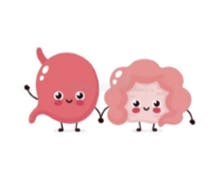A Q&A session with Nicole Somers, PT, DPT

Did you know?
- A concussion is a type of brain injury.
- Imaging, such as MRI and CT scans, are not able to diagnose a concussion.
- Most concussions (90%) are not associated with a loss of consciousness.
What is a concussion?
A concussion is a type of mild traumatic brain injury or mTBI. It occurs as a result of a direct blow to the head or a blow elsewhere to the body where the force is transmitted up through the head (think about whiplash and how the brain is bouncing around inside the skull). Loss of consciousness does not always occur. In fact, most people who have a concussion do not lose consciousness.
So, what really happens?
The impact on the brain causes the brain cells to stretch and become damaged. The damage to the brain cells causes them to release neurotransmitters, which are the chemicals of the brain that allows it to function normally. The imbalance of these chemicals causes the brain to have to work harder and requires more energy, resulting in an “energy crisis” within the brain.
What are the signs and symptoms?
Signs and symptoms of a concussion can occur immediately or hours to days following the injury and include¹:
- Emotional: anger, sadness, nervous or anxious, irritability
- Mental: confusion, feeling foggy, poor memory, poor concentration
- Physical: headache/migraine, clumsiness, dizziness or loss of balance, nausea or vomiting, fuzzy or blurry vision, sensitivity to noise or light
- Sleep: feeling tired, trouble falling asleep, trouble staying awake, too much or too little sleep
What is the recovery time?
A typical concussion will fully resolve in less than 3 weeks with minimal intervention, with significant improvement in the first 7-10 days. In about 20% of concussed people, a concussion takes greater than 4 weeks to resolve. A second concussion before fully recovering from the initial injury can have detrimental effects, including prolonged recovery, permanent brain damage, and even death.
How can physical therapy help?²
Physical therapists are part of the multidisciplinary team capable of helping people return to their normal activities and lifestyles after a concussion. Physical therapists will complete a comprehensive assessment and are highly qualified to address:
- Orthopedic issues and pain from the injury
- Balance, dizziness, and vestibular/vertigo problems
- Visual and ocular motor problems
___________________________
¹ “Symptoms of Traumatic Brain Injury (TBI).” Centers for Disease Control and Prevention, Centers for Disease Control and Prevention, 11 Mar. 2019, www.cdc.gov/traumaticbraininjury/symptoms.html.
² Mucha, Anne, and Susan Whitney. 4 May 2020., MedBridge Education. https://www.medbridgeeducation.com/certificate_programs/11026-concussion-assessment-medical-management.



